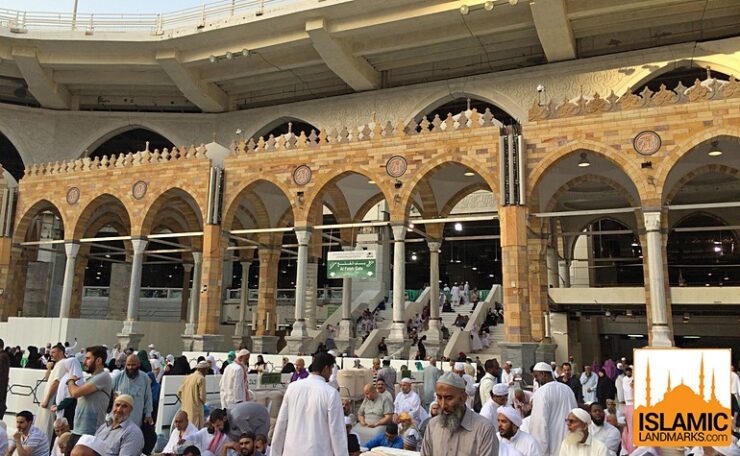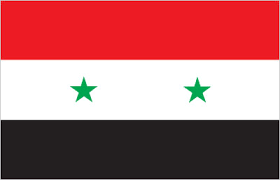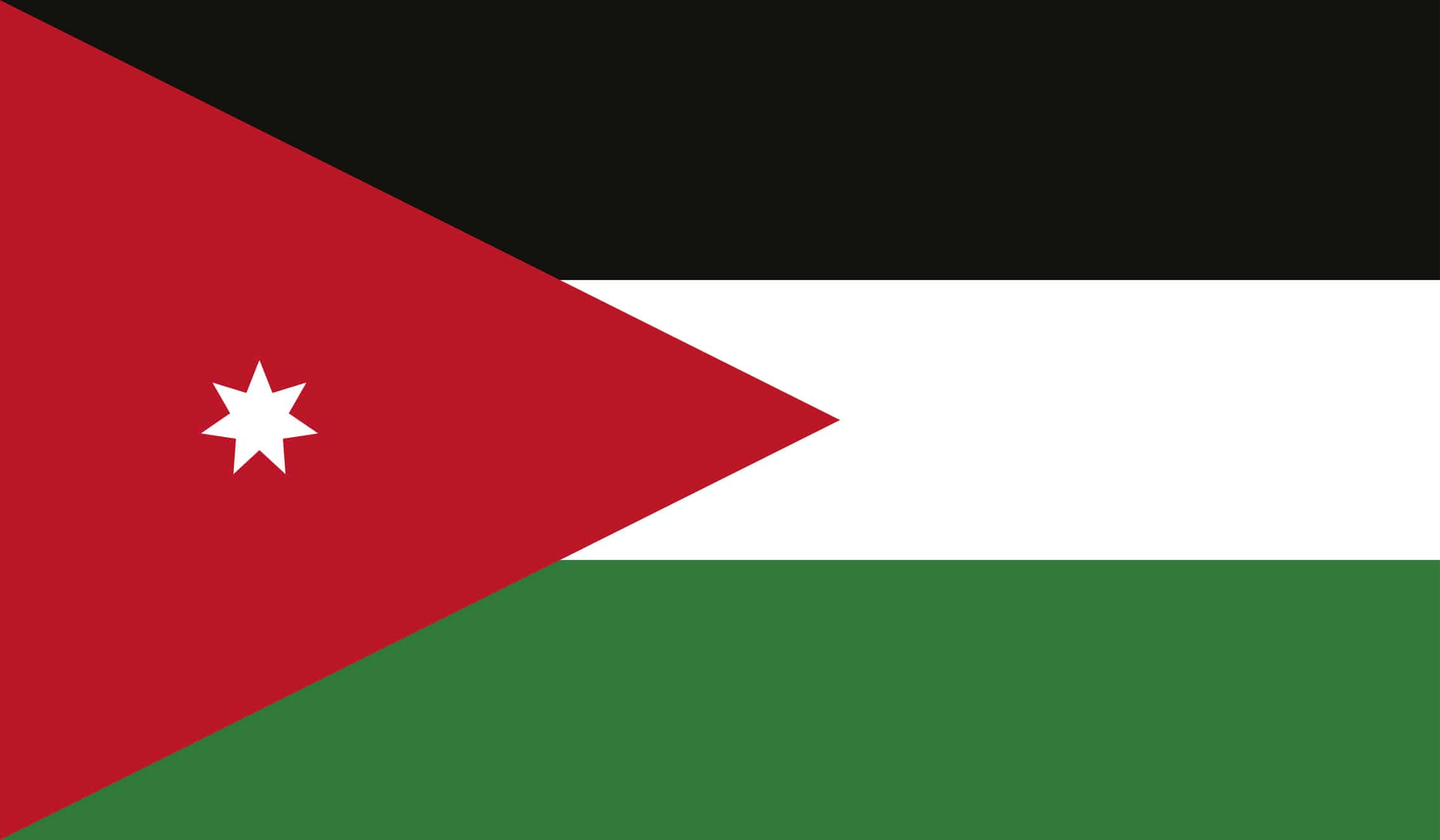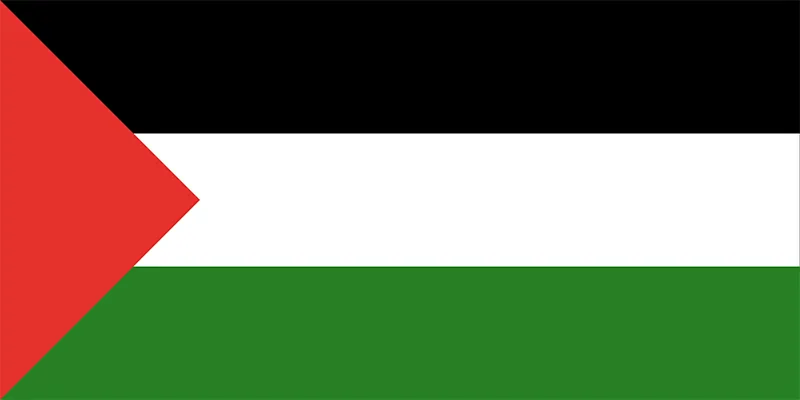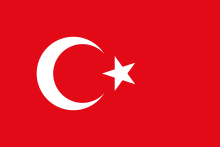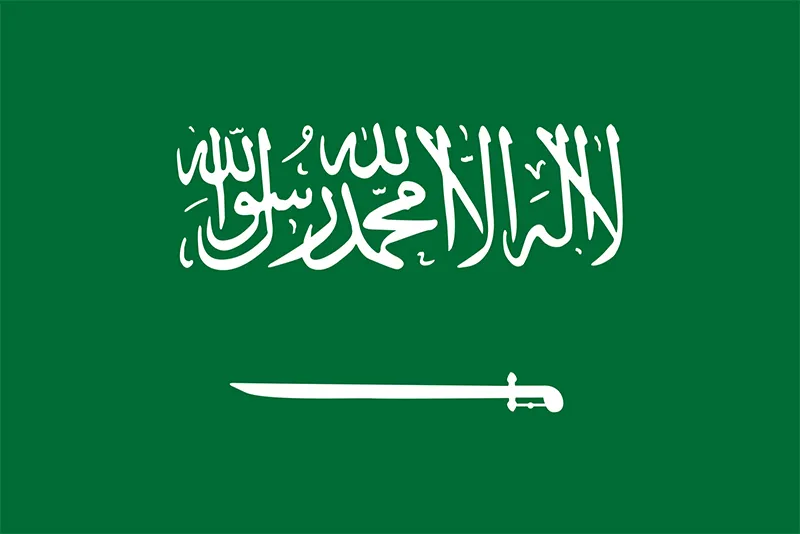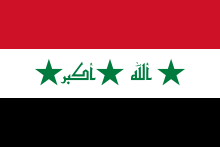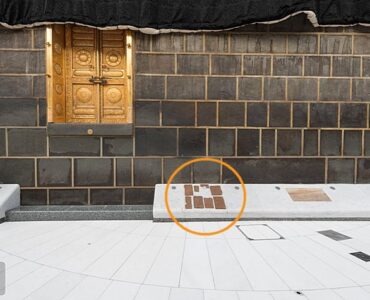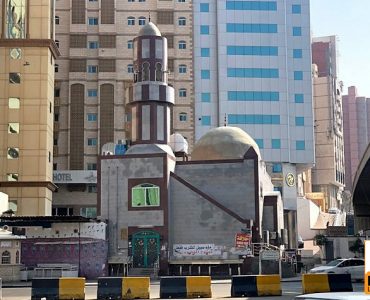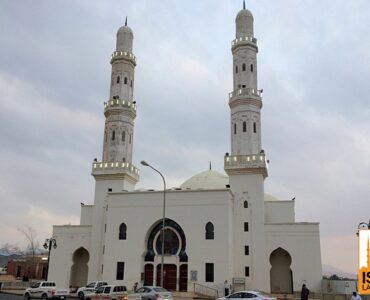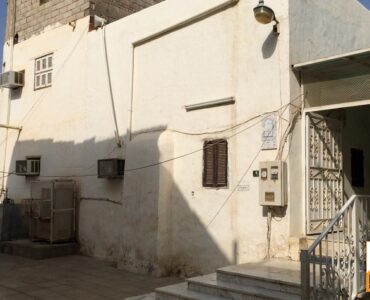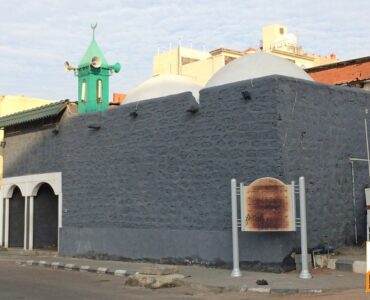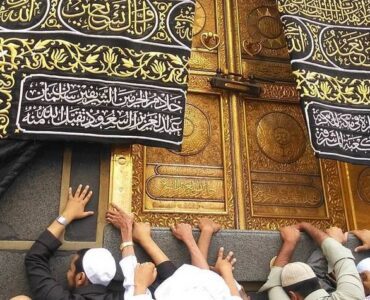This gateway to the Ka’bah is known as Bab ul-Fatah (Door of Victory). It was from here that the Prophet (ﷺ) entered during the conquest of Makkah on Friday, 20 Ramadhan 8 AH.
- When the army of Muslims came towards Makkah, they first halted at Dhu Tuwa, not far from the city but within sight of it. When his camel Qaswa came to a halt, the Prophet (ﷺ) bowed his head until his beard almost touched the saddle, in gratitude to Allah (ﷻ).
- The Prophet (ﷺ) then drew up his troops to enter Makkah. Khalid bin Waleed (رضي الله عنه) took command of the right and entered from the lower part of Makkah. Zubair (رضي الله عنه) took command of the left wing and entered from the upper part of Kada. The centre part of the army was divided into two; half of it was led by Sa’d bin Ubadah (رضي الله عنه) and his son, and the other half, in which the Prophet (ﷺ) himself rode, was led by Abu Ubaidah bin Jarrah (رضي الله عنه) who commanded the infantry. The sheer surprise of the attack stunned the Quraysh and very little resistance was put up against the Muslims.
- It is reported that Ali, the grandson of the Prophet (ﷺ) through his daughter Zainab (رضي الله عنه), sat with the Prophet (ﷺ) on the camel’s back during the triumphal entry into Makkah.
- A red leather tent was pitched for the Prophet (ﷺ) in which he made wudhu (ablution) and performed eight rakahs of nafl salah, after which he rested for an hour or more. Then he called for Qaswa, and having put on his coat of mail and his helmet, he gird on his sword; but in his hand he carried a staff, and his visor was up. Some of those who had ridden with him that morning were already in line outside the tent, and they made an escort for him as he went to the Haram, talking to Abu Bakr (رضي الله عنه), who was at his side.
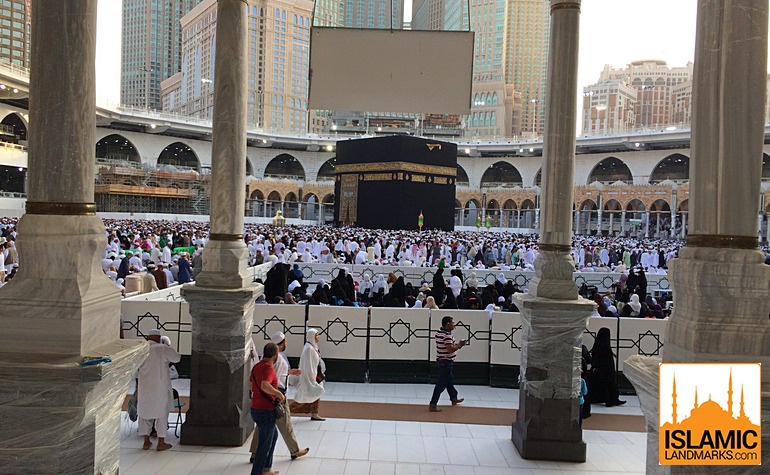

- The Prophet (ﷺ) went to the Ka’bah and performed tawaf. Around the Ka’bah were three hundred and sixty idols. With a stick he was carrying he pushed them over, saying:
And say, “Truth has come, and falsehood has departed. Indeed is falsehood (by nature) ever bound to depart.”
Quran 17:81
Say, “The truth has come, and falsehood can neither begin (anything) nor repeat (it).”
Quran 34:49
- After performing the circle the Prophet (ﷺ) dismounted from his camel and prayed at the Maqame Ebrahim, then drank from the well of Zamzam. He then asked for the keys to the Ka’bah and went inside for a while. By the time he came out the Quraysh had filled the Haram, awaiting anxiously to see what he would do next.
- The Prophet (ﷺ) stood at the door of the Ka’bah, holding its frame and spoke at length to his former persecutors humbled before him, explaining several laws of Islam and abolishing all pagan practices. Then he asked them, “Men of the Quraysh! What do you think I will do to you?”. They said, “We hope for the best. You are a noble brother and the son of a noble brother!”. The Prophet (ﷺ) replied, “I say to you what Yusuf said to his brothers, ‘No reproach shall be on you this day.’ Go on your way, you are free.”
- The Prophet (ﷺ) ordered Bilal (رضي الله عنه) to climb up on the roof of the Ka’bah and give the athan (it is narrated that the Prophet (ﷺ) himself offered his shoulder for Bilal (رضي الله عنه) to climb from). It was the first time the leaders of the Quraysh had heard the word of Allah rising up; the valley of Makkah reverberated with the sound.
- Many eminent members of Quraysh, former bitter enemies, came into the fold of Islam on this day including Abu Sufyan and his wife Hind who had during the battle of Uhud chewed the liver of Hamza (رضي الله عنه).
Location of Bab ul-Fatah in Masjid al-Haram
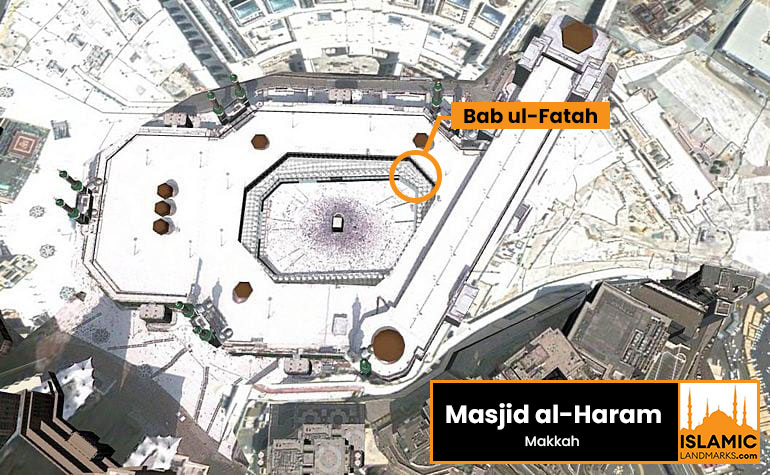

References: When the Moon Split – Shaikh Safiur-Rahman Mubarakpuri, Fazail-e-Aamal – Sheikh Zakariyya Kandhalvi, Muhammed the last Prophet – Sayyed Abul Hasan Ali Nadwi

